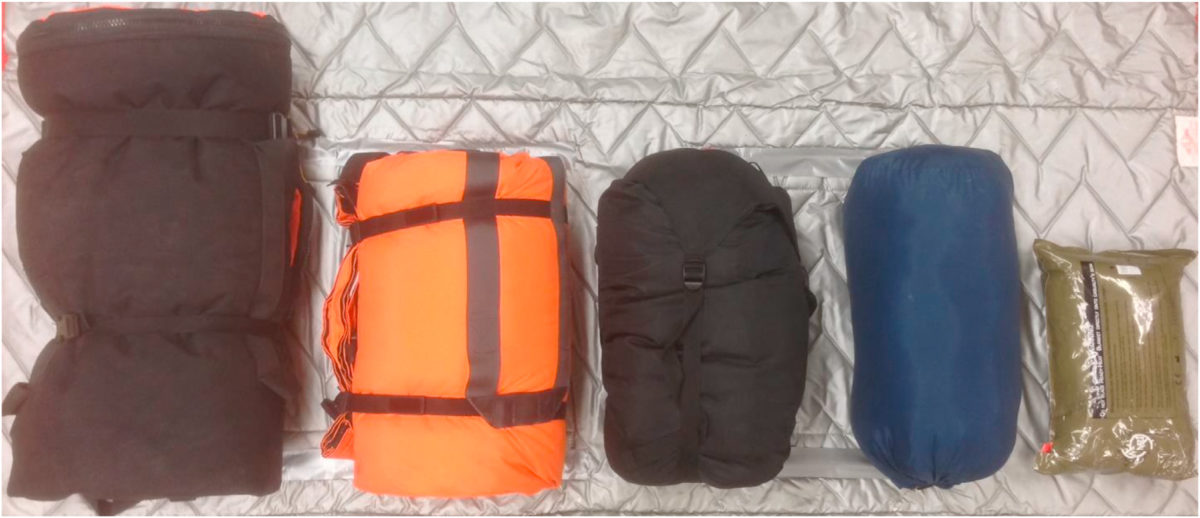
Does the TCCC committee’s proposed guideline change your current practice for hypothermia management?
- Posted by Mike Shertz MD/18D
- Categories (H) Hypothermia Prevention, MARCH
In June 2020, the TCCC Committee submitted a proposed change to hypothermia management for combat casualties.
🕖 Reading Time, 3 minutes
They noted there had been no review of hypothermia management in TCCC in the previous 14 years.1
So what changed?
The proposed hypothermia management changes remind rescuers to make keeping the casualty warm a more immediate priority. Where possible, it is essential to minimize exposure to the cold ground, wind, and water/rain.
Adding an external source of heat to the casualty, like an active warming blanket, ready heat warmers, etc. is desirable. As a reminder, the new ready heat blanket in the current generation Hypothermia Prevention and Management kit can achieve temperatures of 125F for ten hours. As before, it should never be placed directly on the skin, or it could burn the casualty. Similarly, it should never be placed under the casualty as their body weight pressing on the heating blanket can also cause burns, even with a layer of clothing between casualty and heat source.
A recent study showed the HPMK might not be the optimal system to keep casualties warm. Although it provides a heat source and vapor barrier/external wrap for the casualty, there is no insulating material/layer. Optimally, the proposed change recommends placing the casualty in a mummy-style sleeping bag, after the heating blanket is placed on their chest, and then enclosing the entire package in an exterior vapor barrier, like the heat reflective shield of the HPMK.
Though it seems reasonable to place the casualty in a sleeping bag inside the HPMK, if both are available, the study used to show the superiority of that technique was for casualties expected to have prolonged cold environment exposure. Specifically, five volunteers were placed in various hypothermia management systems and then moved to a -22C (-7.6F) cold room for an hour. As the proposed change indicates, if prolonged cold environment exposure is anticipated for the casualty, the non-insulated HPMK is not enough.2
Operationally, if the area is cold enough to carry sleeping bags and pads, they should be integrated into the casualty management plan.
Finally, Co-TCCC recommends if any IV fluid or blood is administered prehospital, it should be through a battery-powered fluid warming system capable of delivering 150 ml/minute flow with an output temperature of 100F (38C).1 No specific device is recommended. Currently, there appear to be five such systems commercially available. Only four have been studied in the medical literature. Based on the study by Lehavi comparing four of the systems, only the Warrior and EnFlow seemed to come close to meeting these requirements.3 Unfortunately, there have been issues with the EnFlow using an aluminum warming plate, which has allowed aluminum to leach into electrolyte solutions, such as IV fluid. They have since been recalled.1
The NAR device called the Quantum has not been tested in peer-reviewed medical literature yet but was created with SOCOM funding and likely will meet these specs as well.
For a quick video on the subject: Long-held SF tradition of always being prepared to provide a block of instruction during down time. Cold blood does not clot: keeping casualties warm must be part of your casualty management strategy.
Interested to learn more? Try our online courses, or get started with a sample of the material in the preview course
Preview CourseNot sure? Try a preview TRAIN NOWOnline Tactical Casualty Care Classes
1 Bennett BL, Giesbrect G, Zafren K, Christensen R, Littlejohn LF, Drew B, Cap AP, Miles EA, Butler FK Jr, Holcomb JB, Shackelford SA. Management of Hypothermia in Tactical Combat Casualty Care: TCCC Guideline Proposed Change 20-01 (June 2020). J Spec Oper Med. 2020 Fall;20(3):21-35.
2 Dutta R, Kulkarni K, Steinman AM, Gardiner PF, McDonald GK, Giesbrecht GG. Human Responses to 5 Heated Hypothermia Wrap Systems in a Cold Environment. Wilderness Environ Med. 2019 Jun;30(2):163-176.
3 Lehavi A, Yitzhak A, Jarassy R, Heizler R, Katz YS, Raz A. Comparison of the performance of battery-operated fluid warmers. Emerg Med J. 2018 Sep;35(9):564-570.
Dr. Mike Shertz is the Owner and Lead Instructor at Crisis Medicine. Dr. Shertz is a dual-boarded Emergency Medicine and EMS physician, having spent over 30 years gaining the experience and insight to create and provide his comprehensive, science-informed, training to better prepare everyday citizens, law enforcement, EMS, and the military to manage casualties and wounded in high-risk environments. Drawing on his prior experience as an Army Special Forces medic (18D), two decades as an armed, embedded tactical medic on a regional SWAT team, and as a Fire Service and EMS medical director.
Using a combination of current and historical events, Dr. Shertz’s lectures include relevant, illustrative photos, as well as hands-on demonstrations to demystify the how, why, when to use each emergency medical procedure you need to become a Force Multiplier for Good.



